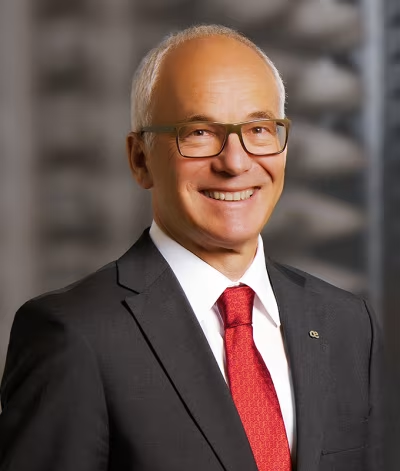And may we ask you for a prognosis for the near future?
I could imagine that organic light emitting diodes will illuminate our environment in the foreseeable future. This will expand the functionality of surfaces by one additional feature – that of light. For example, this would allow walls to become large-area room luminaires. But I could also imagine the use of organic light emitting diodes in flexible screens, as well as a plethora of further application possibilities.
The development of new coatings and the processes they require is very time consuming and therefore expensive. What does that mean for the industry?
The effort involved is indeed very great, which is why industry is often not in a position to undertake this alone. Consequently, cooperative ventures, for example, with universities, are sought as a solution. Many developments must take place at a molecular and atomic level. This requires a broad spectrum of expertise in various disciplines. Understandably, no business wants to, or is able to pursue this.
So, research and industry should work together more closely?
Yes – and that is already very often the case today. Both sides benefit equally from such collaboration. The step from the laboratory to production is enormous. In manufacturing, you are confronted with a completely different set of challenges than in the lab. Research facilities usually lack the infrastructure because pilot plants – which are test systems that make it possible to model processes in real time – are very expensive. This means that financing is only possible with the support of industry.
What are the effects of this type of collaboration?
It enables early data acquisition under the corresponding production conditions and with the inclusion of the necessary production know-how. This has many advantages. For example, the development time is shortened dramatically because a process can be tested under actual conditions very early on. And, once we’re in a position to produce a quantity of one in the requisite quality, then we can also do it for 100, 1’000 and more. Of course, businesses, for their part, must also express interest in a collaboration of this nature.
What role does an institute like Empa play here?
Empa endeavours to create innovations and to make the corresponding knowledge and insights gained available to industry. You could say that we function as a bridge between academic research and industry. The new Coating Competence Center on the Empa grounds in Dübendorf near Zurich is an important step, for example, in intensifying the collaboration between research and the coating industry. In coming years, a location of the ‘Switzerland Innovation Park’ (SIP) will be constructed here in Dübendorf on the grounds of a decommissioned airport. The aim is to encourage businesses to locate their research and development departments there so that, in close cooperation with the scientists of Empa, the Swiss Federal Institute of Technology (ETH) and other institutes, insights can be gained from various processes.
Empa works with many different businesses – even with some that are direct competitors.
That’s true. Empa stands for open innovation, which means making the findings gained from research available to everyone. The last refinements in the development of a process or a product must then still be made by the respective business. As Empa, we enjoy a reputation for the best in professionalism – and that is a plus for us in this sensitive area as well. Trust plays a great role here and forms the basis for good cooperation.
What benefits does the end user actually derive from the new coating technologies on which industry and Empa work?
There are several. For example, coatings are able to increase the service life of a product enormously. The area of ‘printed electronics’, or electronic components which are produced by means of gravure, offset or flexographic printing processes, also offers tremendous potential. This could result in many products becoming significantly less expensive. Coating technologies are also producing new possibilities in medicine such as in the use of coated, high-performance synthetics as implants. In contrast to conventional implants made of metal alloys, these are radiolucent. This makes examinations to track the healing process much easier than is currently the case.


